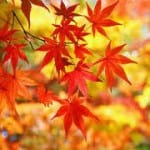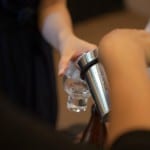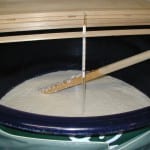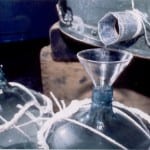Current stats and realities about the #1 sake rice
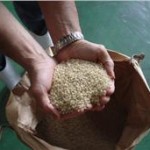 Yamada Nishiki: One needs spend but five minutes in any conversation about sake and the name comes up. Hyperbole aside, it is the most widely grown sake rice, and arguably the best sake rice, or at least the most predictable one to the brewers. Of Japan’s 1250 brewers, almost 1100 use at least some Yamada Nishiki.
Yamada Nishiki: One needs spend but five minutes in any conversation about sake and the name comes up. Hyperbole aside, it is the most widely grown sake rice, and arguably the best sake rice, or at least the most predictable one to the brewers. Of Japan’s 1250 brewers, almost 1100 use at least some Yamada Nishiki.
I recently met a representative from Hyogo Prefecture’s agricultural cooperative. Hyogo is where Yamada Nishiki was born, from where most of it comes, and from where the best of it comes. The distribution of rice in Japan is a complex topic about which a book could be easily written. The only problem with that is that it changes so often there would need to be constant updates and yearly editions. But I digress.
From this gentleman I gleaned some interesting facts about the revered rice. For instance, 80 percent of all Yamada grown comes from Hyogo. There are five villages from which the best stuff comes, and they use an old system of assessing prices that sets the price for one field as the best and highest, and each field is set as a percentage of that. In other words, the fields and land climate are ranked and tied to price.
Over the past few years, though, a combination of factors has led to a shortage of Yamada 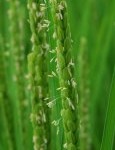 Nishiki. Such factors include a drop in overall rice consumption in Japan which led to changes in subsidies to farmers that led them away from growing it, combined with continued demand for Yamada Nishiki as the demand for premium sake grows. Of course, the real problem stems from a lack of communication between the rice-growing community and the sake-brewing community.
Nishiki. Such factors include a drop in overall rice consumption in Japan which led to changes in subsidies to farmers that led them away from growing it, combined with continued demand for Yamada Nishiki as the demand for premium sake grows. Of course, the real problem stems from a lack of communication between the rice-growing community and the sake-brewing community.
Positive and sure-to-be effective changes were put in place, but were expected to take several years to take effect. However, from two separate sources I have heard that there currently looks like there might be a surplus of Yamada Nishiki this year! This is baffling to me, and may not end up to be true, but a combination of more being grown, brewers switching to other rice types out of frustration, and the actual timing of sales may have led to this.
In any event, what I heard was that the agricultural co-op of Hyogo was calling around to see if any breweries wanted to buy Hyogo-grown Yamada Nishiki. They simply could not fill demand the last few years, and this year they have too much?
 It is tempting to think, well, just grow more, right? It is not that simple for one reason: seeds. It’s all about the seeds. In order to be officially Hyogo Yamada (or any other region) the seeds have to come from a special place, the co-op, to ensure purity. This is valid practice to some degree, and a racket to another degree. But if seeds from the co-op are not used, the co-op and government will not inspect the rice under the name of that particular variety. and If that is not done, the name of the rice cannot be put on the bottle. In other words, if the seeds are not properly sourced, it ain’t Yamada.
It is tempting to think, well, just grow more, right? It is not that simple for one reason: seeds. It’s all about the seeds. In order to be officially Hyogo Yamada (or any other region) the seeds have to come from a special place, the co-op, to ensure purity. This is valid practice to some degree, and a racket to another degree. But if seeds from the co-op are not used, the co-op and government will not inspect the rice under the name of that particular variety. and If that is not done, the name of the rice cannot be put on the bottle. In other words, if the seeds are not properly sourced, it ain’t Yamada.
For Hyogo Yamada Nishiki, a small amount of blue-blood seeds are taken from a special field each year. These are grown to yield seeds that are used to grow more seeds which are used to grow more seeds that will then be used to distribute to farmers to grow the season’s Yamada Nishiki. Count ‘em: that is five generations of seeds needed to yield what will be used to make sake. If, that is, you want to put the name of that esteemed rice “Hyogo-grown Yamada Nishiki” on the bottle.
No wonder they cannot quickly ramp up production. And that makes rumors of a surplus simply baffling. It indicates just how ambiguous, fickle and complex the sake rice distribution world can be.
But, if true, it is of course a good thing for the sake industry, and for you and me.
酒 酒 酒
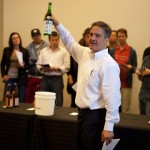 The next Sake Professional Course will take place in San Francisco on December 8 to 10. Learn more here.
The next Sake Professional Course will take place in San Francisco on December 8 to 10. Learn more here.
Meanwhile, the next Sake Professional Course in Japan will take place January 26 to 30, 2015. Learn more here.
Feel free to email me with questions about either!
酒 酒 酒





